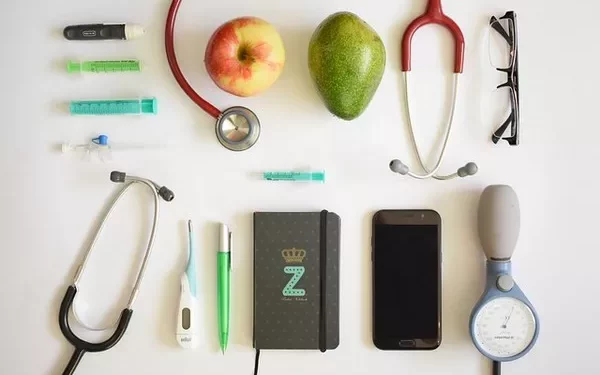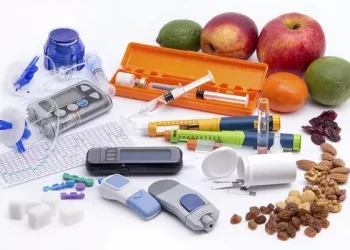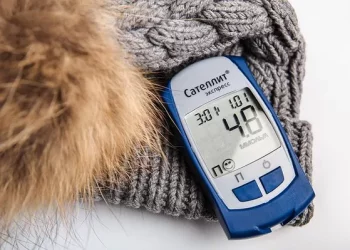Maintaining optimal blood sugar levels is vital for overall health, particularly for individuals managing diabetes or those at risk for the condition. Blood sugar, or glucose, is the primary energy source for the body’s cells, and its regulation is a crucial part of maintaining good health. However, when blood sugar levels become too high (hyperglycemia) or too low (hypoglycemia), it can lead to serious health complications.
This article will provide a detailed explanation of what constitutes good and bad blood sugar levels, why it’s important to monitor them, and how to manage blood sugar to prevent complications. Understanding these concepts is essential for anyone managing diabetes, as well as for those seeking to optimize their health through lifestyle changes.
What Is Blood Sugar and Why Does It Matter?
Blood sugar is the concentration of glucose present in the bloodstream, which is derived primarily from the food we eat. The body regulates blood glucose levels through the actions of insulin, a hormone produced by the pancreas. Insulin allows cells to absorb glucose from the blood, either for immediate energy or for storage in the liver and muscles.
When blood sugar levels fluctuate beyond normal ranges, whether too high or too low, it can lead to a range of symptoms and, if persistent, complications. These fluctuations can cause various health issues, including fatigue, dizziness, nerve damage, heart disease, kidney problems, and vision loss.
Monitoring blood sugar is essential for managing conditions like diabetes, where the body either does not produce enough insulin (Type 1 diabetes) or is unable to use it effectively (Type 2 diabetes). Regular monitoring helps individuals make informed decisions about diet, exercise, and medication management to maintain good health and prevent complications.
What Are Normal Blood Sugar Levels?
Normal blood sugar levels are crucial to understand for both individuals with diabetes and those who are healthy. These levels fluctuate throughout the day, depending on when you eat, how much you eat, and your physical activity level.
For most healthy individuals, the following are the general guidelines for normal blood sugar levels:
Fasting Blood Sugar (before meals): 70–99 mg/dL (3.9–5.5 mmol/L)
Post-meal Blood Sugar (1–2 hours after eating): Less than 140 mg/dL (7.8 mmol/L)
Random Blood Sugar (at any time of day): Less than 140 mg/dL (7.8 mmol/L)
Hemoglobin A1c (a measure of average blood sugar over the past 2–3 months): Less than 5.7%
These ranges are ideal for those without diabetes. A person’s blood sugar levels can vary depending on factors such as age, weight, physical activity, and overall health. However, these guidelines provide a good baseline for maintaining healthy glucose levels.
What Are Good Blood Sugar Levels for Diabetics?
For individuals with diabetes, blood sugar management is essential to reduce the risk of complications like heart disease, kidney damage, and nerve issues. The goal of diabetes management is to keep blood sugar levels within a target range. However, these targets can vary depending on individual circumstances, including the type of diabetes, the individual’s overall health, age, and the medications they are taking.
Generally, the following target ranges are recommended by healthcare professionals for those with diabetes:
Fasting Blood Sugar: 80–130 mg/dL (4.4–7.2 mmol/L)
Post-meal Blood Sugar (1–2 hours after eating): Less than 180 mg/dL (10.0 mmol/L)
Hemoglobin A1c: Less than 7% (53 mmol/mol)
These targets help ensure that blood sugar levels remain in a range that supports overall health and reduces the risk of diabetes-related complications. However, it’s important to note that blood sugar targets can vary, and healthcare providers may adjust them depending on individual health conditions, age, or other factors.
What Are High Blood Sugar Levels?
High blood sugar, or hyperglycemia, occurs when there is too much glucose in the bloodstream. This can result from not enough insulin, poor diet, or a lack of physical activity. Prolonged periods of high blood sugar can damage blood vessels, nerves, and organs, leading to complications such as heart disease, kidney disease, and retinopathy (eye damage).
When are Blood Sugar Levels Too High?
Fasting Blood Sugar Above 130 mg/dL (7.2 mmol/L): When fasting blood sugar levels remain above this level, it may indicate that blood sugar management is not optimal and that diabetes is not under control.
Post-meal Blood Sugar Above 180 mg/dL (10.0 mmol/L): After eating, blood sugar typically rises, but levels above this range may indicate that insulin or other medication is not effectively controlling blood glucose.
Hemoglobin A1c Above 7%: This long-term measure of blood sugar control should ideally be kept under 7%. Higher A1c levels suggest poor blood sugar management over time and a greater risk of complications.
Symptoms of Hyperglycemia include:
-
Increased thirst
-
Frequent urination
-
Fatigue
-
Blurred vision
-
Unexplained weight loss
-
Slow-healing sores or cuts
If blood sugar levels remain consistently high, it is essential to work with a healthcare provider to adjust medication, diet, and lifestyle to bring levels back within the target range.
What Are Low Blood Sugar Levels?
Low blood sugar, or hypoglycemia, occurs when glucose levels drop below 70 mg/dL (3.9 mmol/L). This is often a concern for people with diabetes who use insulin or other medications that increase insulin levels in the body.
When Are Blood Sugar Levels Too Low?
Blood Sugar Below 70 mg/dL (3.9 mmol/L): This is generally considered hypoglycemia. Immediate treatment is necessary to avoid more serious complications.
Symptoms of Hypoglycemia include:
-
Shakiness
-
Sweating
-
Irritability or mood changes
-
Dizziness or lightheadedness
-
Confusion
-
Headache
-
Hunger
-
Fatigue
In severe cases, hypoglycemia can lead to seizures, unconsciousness, and even death. It’s essential to recognize the symptoms early and address them promptly by consuming fast-acting carbohydrates, such as glucose tablets or fruit juice.
Managing High and Low Blood Sugar Levels
Effective blood sugar management involves both preventing and addressing both high and low blood sugar levels. The following strategies can help:
Managing High Blood Sugar (Hyperglycemia)
Medication Adherence: For individuals with diabetes, taking insulin or oral medications as prescribed is key to keeping blood sugar levels within the target range. Work with your healthcare provider to adjust your medications if necessary.
Regular Physical Activity: Exercise can help lower blood sugar levels by increasing insulin sensitivity. Aim for at least 30 minutes of moderate-intensity exercise most days of the week.
Balanced Diet: Eating a healthy diet rich in whole grains, lean proteins, vegetables, and healthy fats can help stabilize blood sugar levels. Avoid excessive consumption of sugary or processed foods that can cause spikes in blood glucose.
Stay Hydrated: Drinking plenty of water helps flush excess glucose from the bloodstream through urine.
Monitor Blood Sugar Levels Regularly: Regular monitoring helps track fluctuations and identify patterns in blood sugar levels. This information can be used to adjust diet, medication, and physical activity.
Managing Low Blood Sugar (Hypoglycemia)
Quick-Acting Carbohydrates: When blood sugar drops below 70 mg/dL (3.9 mmol/L), consume 15 grams of fast-acting carbohydrates such as glucose tablets, fruit juice, or regular soda. Wait for 15 minutes and check your blood sugar again.
Snack After Treatment: After treating a low, have a small snack that combines protein and carbohydrates, such as a piece of fruit with nuts, to help maintain stable blood sugar levels.
Adjust Medications: If hypoglycemia occurs frequently, your healthcare provider may need to adjust your insulin or other medications to prevent further incidents.
Exercise Caution: Exercise can lower blood sugar, so if you’re planning a workout, consider eating a small snack beforehand and monitor your levels closely.
Monitoring Blood Sugar at Home
For people with diabetes, regular blood sugar monitoring is essential. Home blood glucose meters or continuous glucose monitoring systems (CGMs) can help track blood sugar levels throughout the day. This helps identify trends, assess the effectiveness of treatments, and prevent both high and low blood sugar levels.
Conclusion
Maintaining blood sugar within a healthy range is crucial for overall health, especially for those managing diabetes. Understanding what constitutes good and bad blood sugar levels—and knowing how to manage them effectively—can help prevent serious health complications. By regularly monitoring blood sugar, adhering to prescribed medications, following a balanced diet, staying active, and adjusting treatment as necessary, individuals can maintain stable blood sugar levels and improve their quality of life.
Work with your healthcare provider to develop a personalized plan for managing blood sugar and maintaining long-term health. Whether dealing with high or low blood sugar levels, timely intervention and ongoing care can significantly improve health outcomes and prevent complications.
Related topics:























